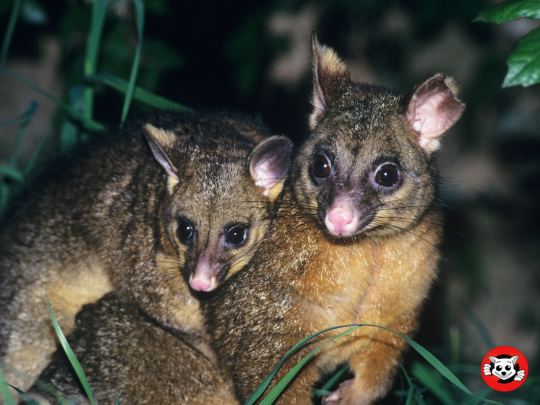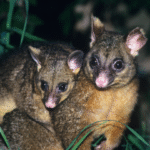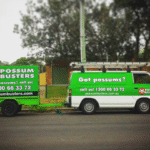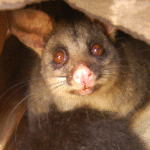Rules, Permits, and What Happens After They Leave the Roof
Finding a possum in your roof can be a stressful experience, leading to property damage, unpleasant odours, and sleepless nights. While your first instinct might be to remove the animal as quickly as possible, it’s crucial to understand that possums are a protected native species in Australia. This means there are strict rules governing their removal and relocation. Many homeowners wonder about the specifics of possum relocation, especially the legal requirements and what happens to the animal afterwards.
This guide explains the entire possum relocation process, from the legal framework and permits to the humane methods used by licensed professionals. We’ll provide a clear, step-by-step overview so you understand how to handle the situation correctly and safely, particularly for those looking into relocating possums in NSW.
Why Is Professional Relocation Necessary?
Possums often seek shelter in roof cavities because they offer a warm, dry, and safe place to nest, away from predators. However, their presence can lead to significant problems, including chewed electrical wiring, damaged insulation, stained ceilings from urine, and persistent noise. While removal is often necessary, doing it yourself is not only illegal in most cases but also frequently ineffective and inhumane.
Possums are territorial. If you trap one and release it far away, it will likely struggle to find food and shelter in an unfamiliar environment, often leading to a slow and painful death. Furthermore, if you don’t seal the entry points to your roof, another possum will simply move in to claim the vacant territory. This is why a professional, structured approach is essential for a long-term solution.
Legal Requirements for Possum Relocation in Australia
All native Australian wildlife, including Brushtail and Ringtail possums, is protected under state and territory legislation, such as the National Parks and Wildlife Act. This makes it illegal to harm, capture, or relocate a possum without the proper authority.
The rules for possum relocation are very specific and vary slightly by state, but the core principles remain the same. In New South Wales, for example, the regulations are stringent. If a possum is captured, it must be released on the same property, within 150 metres of the capture site, after sunset on the day of capture. The idea is to release the animal back into its known territory, where it has established food sources and a social structure. Relocating it further afield is considered an act of cruelty, as the possum’s chances of survival drop dramatically.
Because of these regulations, anyone undertaking possum removal must hold a specific wildlife licence. Attempting to relocate a possum yourself can result in significant fines and cause unnecessary harm to the animal.
The Possum Relocation Process
A licensed possum handler follows a methodical, humane process to ensure the animal is removed safely and your home is secured against future intrusions.
Thorough Inspection and Assessment
The first step a professional will take is to conduct a detailed inspection of your property. This isn’t just about finding the possum; it’s about understanding how it got in. The handler will examine your roof, eaves, vents, and wall cavities to identify all potential entry points. They will also assess the extent of any damage and determine the species of possum, which can influence the method of capture.
Obtaining Necessary Permits
While licensed professionals operate under an annual licence, some situations may require specific permits. The handler will ensure all activities are fully compliant with state regulations, such as those set by the NSW Department of Planning and Environment. This protects you, the homeowner, from any legal complications.
Humane Capture
Once the entry points are identified, the humane capture process begins. The most common method involves installing a one-way door over the main entry point. This device allows the possum to leave your roof at night to forage for food, but prevents it from getting back in. This is a stress-free method for the animal, as it is not trapped or handled directly.
In some cases, such as when a possum is sick, injured, or trapped inside a home’s living space, a cage trap may be necessary. Licensed handlers use traps designed to capture the animal without causing injury. They are baited with fruit and placed in the possum’s direct path.
Sealing Entry Points
This is the most critical step in the entire process. Once the possum is confirmed to be out of the roof (usually after a night or two), the professional will permanently seal all entry points. They use durable materials, such as wire mesh, metal flashing, and sealant, to ensure the repairs are possum-proof. Without this step, the problem is guaranteed to return.
Relocation and Release
As per legal requirements, if a possum has been trapped in a cage, it must be released on your property. The handler will release it at dusk, giving it the best chance to find a new, alternative shelter nearby, such as a sturdy tree. They will also provide advice on how to make your garden more accommodating for the possum, such as installing a nest box, encouraging it to stay on your property but out of your house.
What Happens to Possums After They Are Relocated?
A common concern for homeowners is the welfare of the possum after it leaves the roof. When the process is handled correctly, the possum’s chances of thriving are high. By being released back into its home territory, it already knows where to find food, water, and other potential sources of shelter.
The one-way door method allows the possum to exit on its own terms and simply find a new den within its existing territory. While it may be temporarily displaced, it won’t be disoriented or thrown into a dangerous, unfamiliar environment. This humane approach is central to the legal framework for possum relocation in Australia. It acknowledges the animal’s right to exist while resolving the conflict with the homeowner.
Why You Should Always Hire Licensed Handlers
Tackling a possum problem on your own is a risky proposition. Apart from the legal penalties, DIY attempts often fail to yield satisfactory results. You might trap a mother, leaving its young to die in your roof, or seal the entry points while the possum is still inside, leading to a much bigger and more unpleasant problem.
Hiring a licensed professional offers several key benefits:
- Legal Compliance: They understand and comply with all applicable state laws and regulations.
- Humane Treatment: They are trained to handle possums in a manner that causes them no stress or harm.
- Effective Results: They provide a long-term solution by not just removing the animal but also possum-proofing your home.
- Safety: They can safely navigate roof cavities and identify potential risks, such as damaged wiring.
A Humane and Legal Solution
Understanding the possum relocation process reveals it is less about moving an animal far away and more about responsibly managing a conflict between humans and native wildlife. The laws in place, especially those related to relocating possums in NSW, are designed to protect these animals while allowing homeowners to reclaim their properties.
By hiring a licensed professional, you ensure the job is done legally, humanely, and effectively, providing a permanent solution that respects Australia’s unique wildlife.
Need help with possum relocation? Get a free quote from Possum Busters for licensed and humane services across Australia. Our experts can safely resolve your possum problem and secure your home against future intrusions.
Frequently Asked Questions (FAQs)
What are the rules for relocating possums in NSW?
In NSW, if a possum is captured, it must be released back onto the same property within 150 metres of the capture point. This must be done at dusk on the day of capture to ensure it is returned to its home territory.
Do I need a permit to relocate a possum?
Yes, you must either hold a specific wildlife licence or hire a licensed professional to capture or interfere with a possum legally. DIY removal and relocation are illegal.
How far can you relocate a possum?
Legally, you can’t relocate a possum far from where it was found. In NSW, the limit is 150 metres from the capture site. The goal is to keep the possum within its known territory to maximise its survival rate.
What happens to possums after relocation?
When released back into their territory, possums will seek a new den nearby. Because they are in a familiar environment, they know where to find food and water. This humane process gives them a high chance of survival, unlike illegal relocation to a distant, unknown area.









